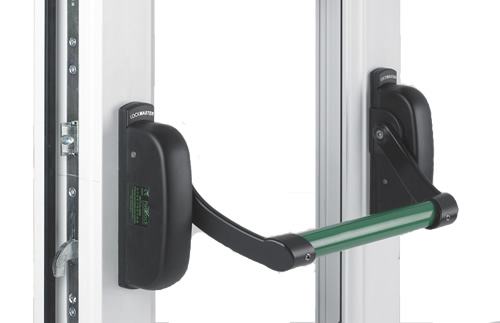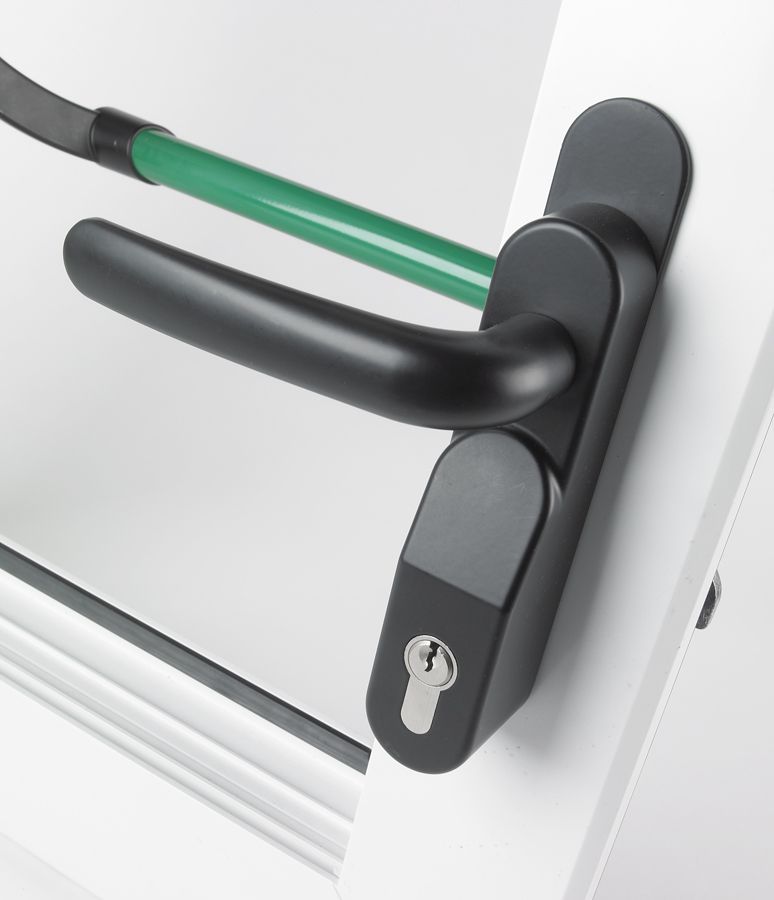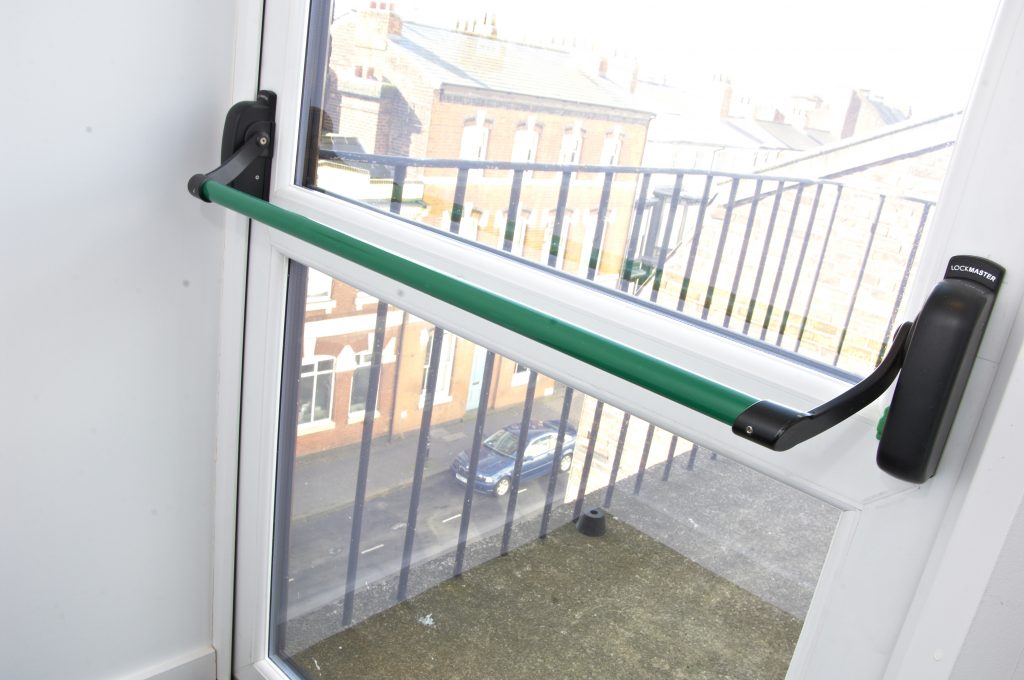Brett Evans, Technical Director Door Hardware at Yale, outlines the responsibilities of various stakeholders regarding panic hardware
When emergency strikes in a building, it is vital that the people inside have a simple and intuitive means of opening exit doors and getting themselves to safety. That’s what panic hardware provides, and we in the industry all have a duty of care to make sure it functions as it should.
Simply supplying a CE- and UKCA-marked product is not enough. All panic hardware must be accredited to BS EN 14351-1:2006 +A1:2016, while doors and gates (with or with-out related hardware) intended for use in ‘Fire/Smoke Compartmentation’ and on ‘Escape Routes’ fall under AVCP Level 1.
Therefore, they require the services of a Notified Certification Body to carry out the certification activities required by BS EN 14351-1 and confirm the suitability of the components used in the manufacture of the door. This includes audits of the factory and factory production control system as required by BS EN 14351-1:2006 +A1:2016, which emphasizes the need for proper installation, use, and maintenance of panic hardware.
Manufacturers, fabricators, installers and building owners all share this responsibility. Here’s a closer look at what it involves.
Installation advice
While fabricators won’t be installing the panic hardware in the building, they still have a responsibility to provide clear instructions – plus technical support when needed – so the products can be installed in a way that meets the requirements.
This means explaining how to install them in the right position on the emergency exit doors, and how to mount them to the door and frame securely so they will be able to withstand the force of emergency use.
It also means providing installers with guidance on how to test the panic hardware after installation, ensuring it still works smoothly and reliably. In addition, installers must be made aware of the need for clear signage that indicates the presence of panic hardware and provides instructions on how to operate it.
Maintenance matters
Just as fabricators must guide the installer, so the installer must guide the building owner or manager. This involves showing them how the door operates, discussing cyclical maintenance and signing the handover document – all of which is a crucial part of ensuring that panic hardware continues to operate safely and reliably.
As such, fabricators must provide installers with detailed instructions on how to carry out a weekly visual inspection of the products, so the installers can then pass this on to the recipient, estates manager, maintenance team. Common checks include ensuring that the strikers are free from obstruction, the latches move freely and pass by the striker when operated and there are no loose components.
Those responsible for cyclical maintenance will also need to carry out longer-term checks, including that the device still works with the door both opened and closed, all moving parts are still lubricated and all fixing screws and covers remain fastened tightly.
The Yale service
Here at Yale, we don’t just supply proven panic hardware – we also offer comprehensive support that enables fabricators, installers and building managers to carry out their full duty of care to end-users.
This includes detailed guidance on how to meet EN 14351 AVCP-1 throughout the lifecycle of the products.
We also provide a range of installation guides and videos, user manuals and maintenance recommendations that explain precisely how to install and maintain our products in a way that meets the regulations. These must be passed on to the installer and building owner or manager to ensure that the exit device remains compliant.
We all have a duty to encourage compliance with panic hardware regulations. While the specific role of each stakeholder varies, the key is to provide clear instructions and ongoing support to ensure the proper installation, use and maintenance of the products. Only then will we be meeting the guidelines in full – and doing our bit to keep building users safe if the worst should happen.
To find out more about our range of panic hardware, call 01902 366800 or visit www.yaledws.com.



